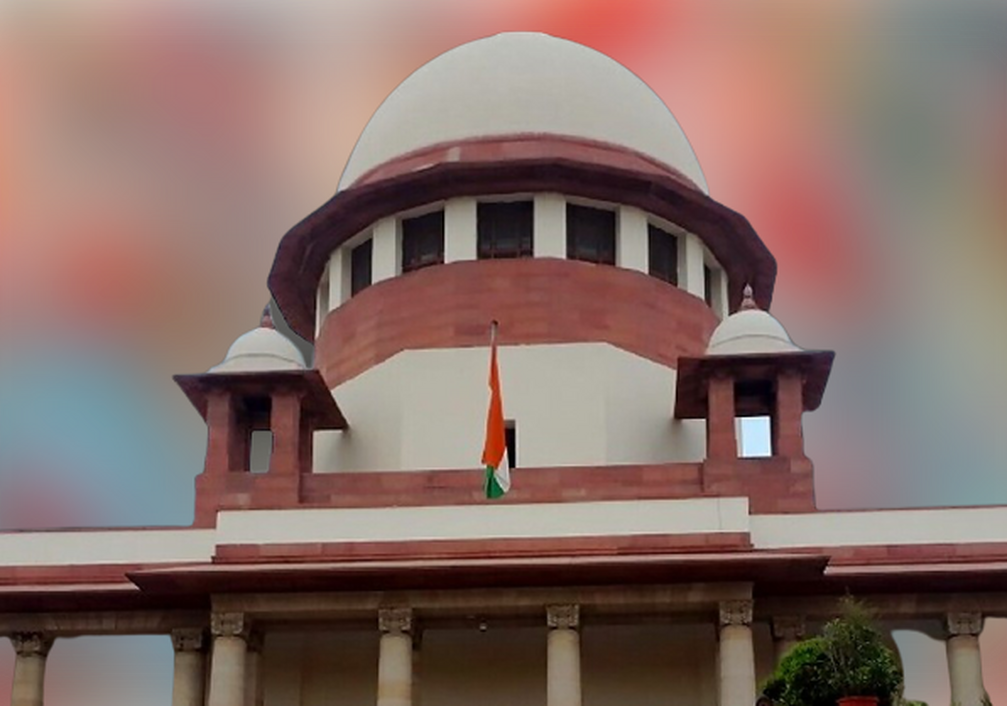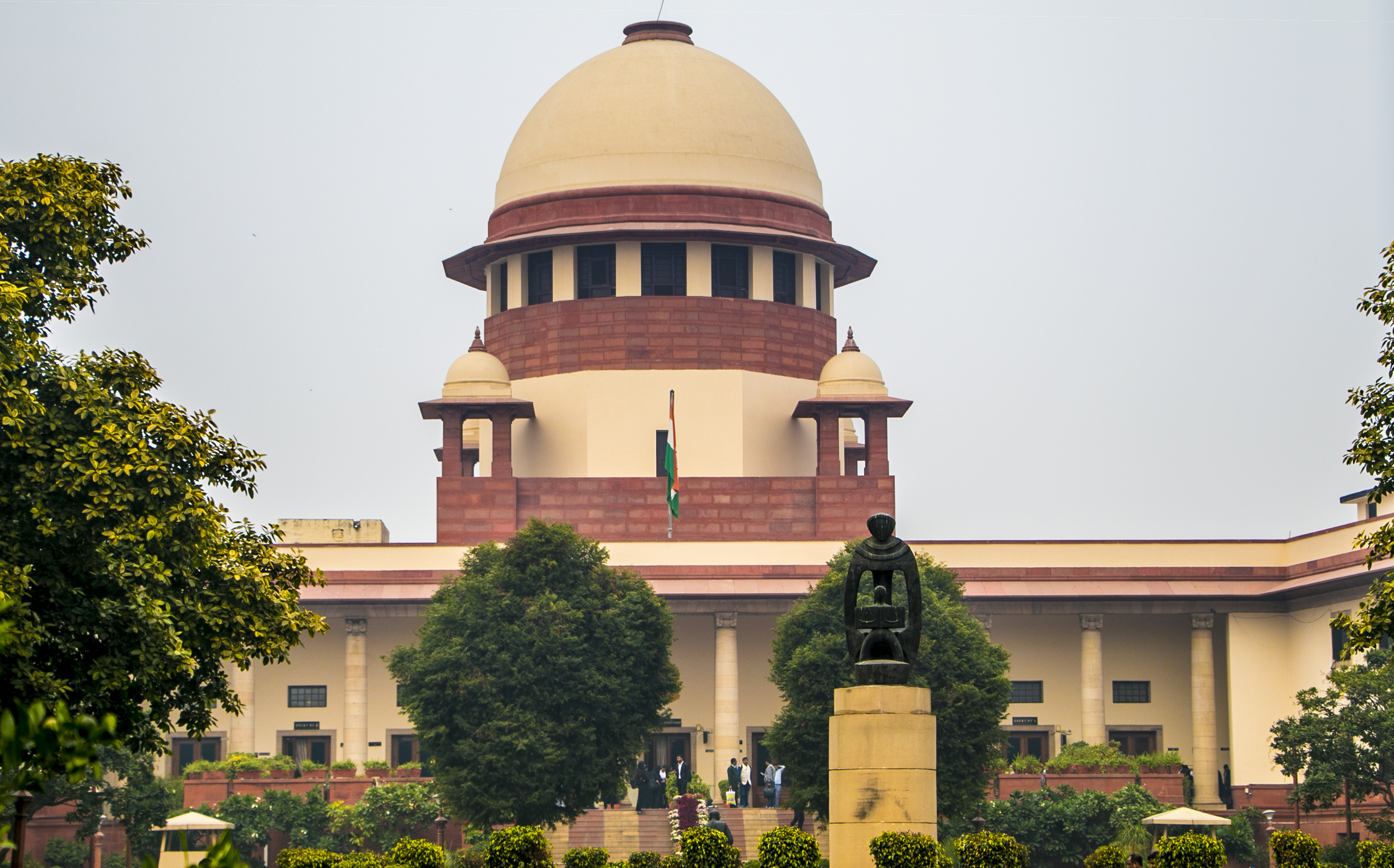In CIVIL APPEAL NO. 9133 OF 2019-SC-Supreme Court refers to larger Bench the issue of whether Section 30(2)(b)(ii) of IBC entitles dissenting financial creditor to be paid minimum value of its security interest
Justices Sanjiv Khanna & S.V.N. Bhatti [03-01-2024]

Read Order:DBS BANK LIMITED SINGAPORE v. RUCHI SOYA INDUSTRIES LIMITED AND ANOTHER
Tulip Kanth
New Delhi, January 4, 2023:Taking a different view and ratio from India Resurgence ARC Private Limited v. Amit Metaliks Limited & Anotheron the interpretation of Section 30(2)(b)(ii) of the IBC, the Supreme Court has referred to a larger Benchthe issue of whether a dissenting financial creditor is entitled to minimum value of its security interest.
The Division Bench of Justice Sanjiv Khanna and Justice S.V.N. Bhatti was considering the issue whether Section 30(2)(b)(ii) of the Insolvency and Bankruptcy Code, 2016 as amended in 2019, entitles the dissenting financial creditor to be paid the minimum value of its security interest.
The facts of the case suggested that the Appellant - DBS Bank Limited Singapore had extended financial debt of around 50 million dollars to M/s. Ruchi Soya Industries Limited (Corporate Debtor).A Corporate Insolvency Resolution Process (CIRP) was initiated against the Corporate Debtor. The company petition seeking to initiate CIRP was admitted and a Resolution Professional was appointed.The appellant had submitted its claim, which was admitted by the RP at Rs. 242,96,00,000
On 20.03.2019, Patanjali Ayurvedic Limited submitted a resolution plan for Rs. 4134 crore against the aggregate claims of around Rs. 8398 crore representing approximately 49.22% of the total admitted claims of the financial creditors. The appellant informed the Committee of Creditors that the sole and exclusive nature of security held by the appellant by way of mortgage/hypothecation over immovable and fixed assets of the Corporate Debtor was of greater value compared to collaterals held by other creditors. The appellant requested the CoC to take into account the liquidation value of such security while considering the distribution of proceeds and to make such distribution in a fair and equitable manner.The resolution plan was approved by 96.95% of the CoC. The appellant had voted against the resolution plan, thereby becoming a dissenting financial creditor.
The resolution plan was filed for approval before the National Company Law Tribunal. Separately, the appellant challenged the distribution mechanism of the resolution plan proceeds by way of an application before the NCLT, Mumbai.The NCLT granted provisional/conditional approval to the resolution plan. By the same order, the NCLT dismissed the appellants application challenging the distribution mechanism of the resolution plan proceeds.The appellant challenged the dismissal of its application before the National Company Law Appellate Tribunal.
During pendency of the appeal, Section 6 of the Insolvency and Bankruptcy Code (Amendment) Act, 2019 was notified which amended Section 30(2)(b) of the Code. Amended Section 30(2)(b)(ii) of the Code provides that operational and dissenting financial creditors shall not be paid an amount lesser than the amount to be paid to creditors in the event of liquidation of the Corporate Debtor under Section 53(1) of the Code. Explanation 2 added thereby makes the amended Section 30(2)(b) applicable to pending proceedings. Section 30(4) was also amended to state the CoC shall take into account the order of priority amongst creditors as laid down in Section 53(1) of the Code.
At the 26th CoC meeting, the appellant requested the CoC to reconsider the distribution of the resolution proceeds in light of the amendments to the Code. The appellant had submitted that if the amendments were considered, it would be entitled to receive Rs. 217,86,00,000 which is the liquidation value of the security interest. The CoC, however, did not accept the prayer. The NCLT finally approved the resolution plan. The appellant challenged the final approval order by way of an appeal before the NCLAT. The first NCLAT appeal preferred by the appellant was still pending.
The two appeals preferred by the appellant against the orders/judgments of the NCLT but the same were dismissed. Hence, the appellant approached the Top Court.
At the outset, the Bench clarified that the Amendment Act was certainly applicable when the appeals were heard and decided by the NCLAT on 18.11.2019 and 09.12.2019, which was post the enforcement of the Amendment Act.Next, the Bench referred to Section 30(2)(b)(ii) which recognises that all financial creditors need not be similarly situated. Secured financial creditors may have distinct sets of securities.
Reference was made to Committee of Creditors of Essar Steel India Limited v. Satish Kumar Gupta &Ors, Swiss Ribbons Private Limited and Another v. Union of India and Others and Vallal RCK v. Siva Industries and Holdings Limited and Others which have held that the commercial wisdom of the CoC must be respected.
“Therefore, the resolution plan accepted by the requisite creditors/members of the CoC upon voting, is enforceable and binding on all creditors. The CoC can decide the manner of distribution of resolution proceeds amongst creditors and others, but Section 30(2)(b) protects the dissenting financial creditor and operational creditors by ensuring that they are paid a minimum amount that is not lesser than their entitlement upon the liquidation of the corporate debtor”, the Bench stated.
However, the Bench observed that a dissenting financial creditor cannot take advantage of Section 30(2)(b)(ii). A secured creditor cannot claim preference over another secured creditor at the stage of distribution on the ground of a dissent or assent, otherwise the distribution would be arbitrary and discriminative. The purpose of the amendment was only to ensure that a dissenting financial creditor does not get anything less than the liquidation value, but not for getting the maximum of the secured assets.
“In our opinion, the provisions of Section 30(2)(b)(ii) by law provides assurance to the dissenting creditors that they will receive as money the amount they would have received in the liquidation proceedings. This rule also applies to the operational creditors. This ensures that dissenting creditors receive the payment of the value of their security interest”, the Bench further noted while adding that the dissenting financial creditor has to statutorily forgo and relinquish his security interest on the resolution plan being accepted, and his position is same and no different from that of a secured creditor who has voluntarily relinquished security and is to be paid under Section 53(1)(b)(ii) of the Code.
The Top Court’s reasoning found resonance in the reasoning given in Jaypee Kensington (supra), which states that for the purpose of discharge of obligation mentioned in the second part of Section 30(2)(b) of the Code, the dissenting financial creditors are to be paid an amount quantified in terms of the proceeds of assets receivable under Section 53 of the Code.What the dissenting financial creditor is entitled to is the payment, which should not be less than the amount/value of the security interest held by them. The security interest gets converted from the asset to the value of the asset, which is to be paid in the form of money, the Bench added.
The Bench opined that a dissenting financial creditor, therefore, cannot enforce the security interest. A dissenting financial creditor enforces the security interest, the resolution plan itself may fail and become unworkable. The dissenting financial creditor has to statutorily forgo and relinquish his security interest on the resolution plan being accepted, and his position is same and no different from that of a secured creditor who has voluntarily relinquished security and is to be paid under Section 53(1)(b)(ii) of the Code.
“The dissenting financial creditor cannot object to the resolution plan, but can object to the distribution of the proceeds under the resolution plan, when the proceeds are less than what the dissenting financial creditor would be entitled to in terms of Section 53(1) if the corporate debtor had gone into liquidation. This is the statutory option or choice given by law to the dissenting financial creditor. The option/choice should be respected”, the Bench said.
Furthermore, the Bench held that a secured creditor not satisfied with the proposed pay- out can vote against the resolution plan or the distribution of proceeds, in which case it is entitled to full liquidation value of the security payable in terms of Section 53(1) on liquidation of the corporate debtor. The conflict with sub-clause (ii) to clause (b) to sub-section (2) to Section 30 does not arise as it relates to the minimum payment which is to be made to an operational creditor or a dissenting financial creditor. A dissenting financial creditor does not vote in favour of the scheme. Operational creditors do not have the right to vote.
Thus, taking a different view and ratio from India Resurgence ARC Private Limited (Supra)on interpretation of Section 30(2)(b)(ii) of the IBC, the Bench held, “…we feel that it would be appropriate and proper if the question framed at the beginning of this judgment is referred to a larger Bench. The matter be, placed before the Hon’ble the Chief Justice for appropriate orders.”
Sign up for our weekly newsletter to stay up to date on our product, events featured blog, special offer and all of the exciting things that take place here at Legitquest.




Add a Comment